Tuscany conjures up images of quiet meandering country roads winding uphill through fields of yellow crops to reach honey coloured stone villages asleep during the long afternoon siesta. The five ports of the North Tyrrhenian Sea Port Authority – Livorno, Piombino, Portoferraio and Rio Marina on the island of Elba, and the tiny harbour on the island of Capraia – are however very busy. Livorno is the cruise port of Tuscany with many coach loads of tourists leaving the port in the early morning, or the more adventurous taking the train, for the tourist attractions of the hotspots of Florence, Pisa and Lucca. Florence is known as the ‘City of the Lily’, as the emblem of the city has been a red lily on a white background since the eleventh century. The city is very famous for its art treasures, cathedral, and churches, and was ruled by the Medici family from 1421 to 1737. The beautiful city lies on the river Arno and was the birthplace of Dante and Machiavelli and is also known as the ‘Cradle of Civilisation’.

Livorno is the third largest port on the western coast of Italy, with over three hundred cruise ships arriving in 2016 with over 800,000 tourists (up by 2.5% over the previous year), and around 1.668 million ferry passengers moving in or out of the port to Corsica, Sardinia, North Africa and Barcelona in 2016. It is also a very busy cargo port with 32.816 million tonnes of cargo in 2016 (up 0.3% over the previous year), including twenty million tonnes of imports and almost thirteen million tonnes of exports. These are grain, timber, phosphates, fertilisers, silica sand, non-ferrous metals, paper, rutile sand, cellulose, clay, metal products, marble, coal, crude petroleum, refined petroleum products and a LNG reception terminal for four billion cubic metres of methane.
History of Livorno
Livorno was an ancient small Etruscan port and historical centre along with Populonia near the port of Piombino, the ferry port for the island of Elba. The construction of the Via Aurelia coincided with the occupation of the area by the Romans, who left many ruined towers as traces of their rule. The word Livorno is a transcription of the Latin word of a natural cove called Liburna, later Livorna and then Livorno. A small coastal village, port and the remains of a Roman tower existed in 1017. Countess Matilda of Tuscany built a new tower and donated the small fishing village to the Roman Catholic church in 1103, which then was fortified to pass into the hands of the Visconti family.
The all powerful Medici dynasty, rulers of Florence with an iron fist from the 15th to 18th centuries, began construction of an elaborate harbour at Livorno between 1518 and 1534, which encompassed canals, high fortified walls, towers and fortresses, with arched bridges over the canals. These canals are worth visiting today in the Porto Vecchio or Old Port. The town of Livorno was designed during the Italian Renaissance by architect Bernardo Buontalenti in 1577. The Medici family made Livorno a Free Port to make it one of the most important ports of the Mediterranean with an influx of Spanish, Armenians, Greeks and people from other countries, with the Spanish Muslims forced to convert to Roman Catholicsm. The Medici granted the port the status of a city in 1606, and Grand Duke Ferdinand I of Tuscany defeated Ottoman forces in 1618. A statue of him was commissioned from Pietro Tacca and was installed in 1599 in the Piazza Micheli, with the addition of four Moorish slaves chained together around its base during 1623 to 1626, and is known as ‘The Four Moors Statue’. The curved breakwater that protects the port was later constructed by the Medici successors, the important Habsburg dynasty of rulers.
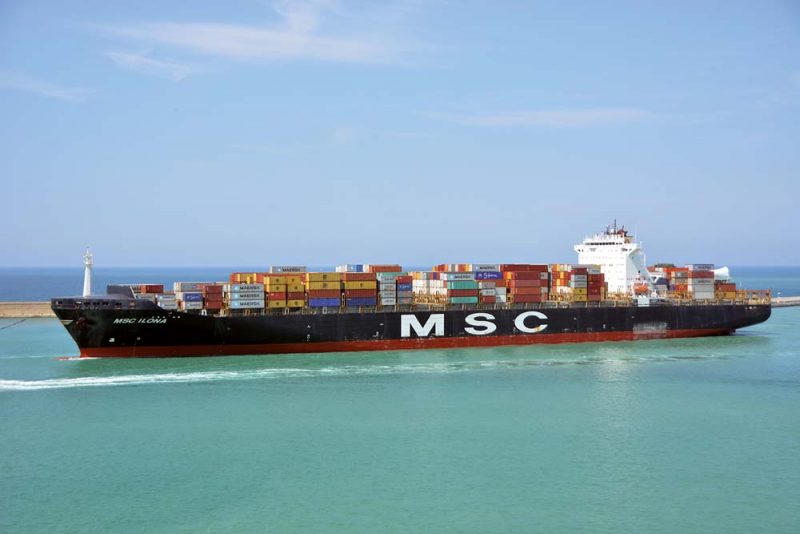
In 1861, Italy succeeded in its Wars of Unification, and Livorno became part of the Kingdom of Italy. In the late 19th century, Livorno blossomed with a town plan that included a cathedral, theatres, libraries, museums and a railway station, all built in the ‘Neoclassical’ and ‘Liberty’ styles of architecture. Livorno suffered extensive damage during the terrible fighting of World War II, with many historic sites and buildings destroyed by Allied bombing as well as German and Italian shelling. The cathedral and synagogue were destroyed and these and most of the city was rebuilt during post-war years.
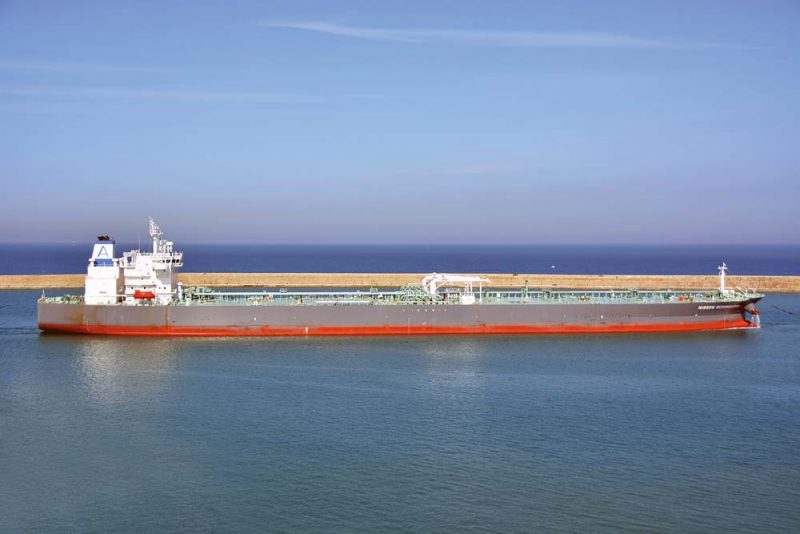
The Port Of Livorno
Located at latitude 43º 32′ north, longitude 10º 17′ east, the harbour consists basically of an Old Port (Porto Vecchio) and a New Port (Porto Nuovo), the latter much expanded during the last two decades, and all protected by four breakwaters. The breakwater to the north is the Marzocco breakwater, and to the west are the Meloria and Curvilinear breakwaters, and to the south the Vegliaia breakwater. There are two entrances to the port, the Bocca Nord or north entrance between the Marzocco and Meloria breakwaters, and the Bocca Sud or south entrance between the Curvilinear and Vegliaia breakwaters. Vessels drawing up to twenty feet can enter through the north entrance, and up to forty feet through the south entrance. Loaded Aframax tankers can only transit the entrances during daylight hours, but coastal tankers up to 15,000 dwt can leave during the hours of darkness.
Persistent north west winds with a southerly current in summer run between the shoal of Meloria and the harbour, while a northerly current prevails during the winter and south east and south west gales. The roadstead of Livorno is exposed to winds from the open sea rendering anchorage unsafe, with those vessels that do anchor being advised to be at least 12.5 cables from the lights at the southern extremity of the Curvilinear breakwater. The harbour contains four large basins as follows:-
Outer Harbour, which includes the space between the south Vegliaia breakwater, the Curvilinear and Meloria breakwaters to the west, and the Marzocco breakwater to the north.
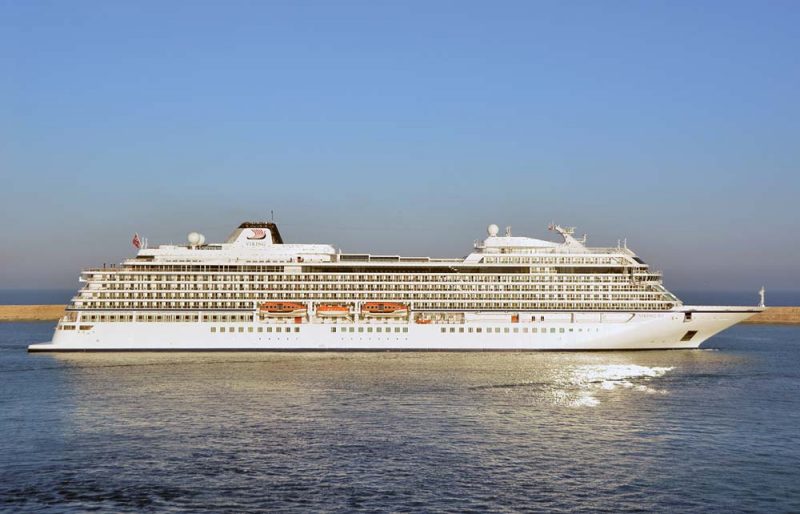
Old Harbour (Porto Vecchio), which includes the Capellini and Firenze basins, and the Darsena of the Stazione Marittima or Ferry Port. The three thousand square metres of the Cruise Terminal building is also at the entrance to the Firenze basin.
Bacino San Stefano with the Darsena Calafati, Darsena Petroli, Darsena Pisa and the entrance to the Porto Nuovo (New Port). Alto Fondale quay is used for the handling of various dry general cargoes.
New Port (Porto Nuovo) formed by the Bacino Evoluzione, the Central Basin, and the new Darsena Toscana container terminal, and the Darsena Inghirami used by Grimaldi ro-ros, and the Darsena Ugione and Canale Industriale for forestry products and paper roll handling. The very long and impressive Toscana container handling yard has been reclaimed from the sea, and there are further areas of reclamation in progress where the Toscana container yard meets the Marzocco breakwater. This area is bounded to the north by the railway line to the Livorno Centro station, rendering further expansion northwards impossible.
There are a total of sixty quays in the four basins of 6,000 metres in length, including the Avamporto quays, the Sgarallino quay, the Andana degli Anelli quay, the Deposito Franco quay of grain silos, the Orlando quay, the Pisa quay, the Carrara marble quay, and the recently built container and ro-ro quays of the New Port to the north. The Medicean Porto Vecchio is accessed via a mouth facing west in the Avamporto that is 100 metres wide and twelve metres deep. The Avamporto also provides access to the San Stefano basin along a channel running north to south and dredged to a depth of thirteen metres with a width of 100 metres.
Vessels going to the Nouva Darsena Petroli, Calata Alti Fondali Varesini, and the Molo Italia (under construction) use the channel to the west of the port basin with an approximate diameter of 500 metres. A one hundred metre long channel with a draft of thirteen metres and a navigable width of seventy metres leads to the Porto Nuovo area with a turning circle of around 375 metres from which vessels reach the Darsena Toscana container quay, the Darsena Inghirami, the Darsena Ugione and the Canale Industriale. Terminals here include the Grimaldi ro-ro terminal, LTM terminal, Costieri d’Alesio terminal, Laviosa terminal, Lorenzini terminal, Labromare terminal, Novaol terminal, Neri Depositi Costiere terminal, Tozzi terminal, F. Bartoli terminal, Rhodia Italia terminal, Sintermar terminal, and a terminal for reefer ships. Container lines calling at the Toscana quay include Hapag-Lloyd, ro-ro lines include NYK, and tankers for the Darsena Petroli include Antwerpen of 26,361 dwt built in 2005 for Exmar N.V. of Belgium.
The Cruise Terminal is a light and airy tall building and has been purposely designed to make the cruise experience as enjoyable as possible. There is an Espressamente food serving and coffee bar at one end, and a hospitality desk with staff trained in multilingual information, free internet wi-fi, and ample toilets. The Ferry Terminal building has ticket offices on the first floor, ample parking and boarding areas, toilets for both able and disabled passengers, a bar and restaurant, a self service mini market, newsagent, many shops including tobacconist, pharmacy, vending kiosks and machines, payphones, car rental offices, air conditioning and/or heating, and long ramp access for disabled ease of movement. Cruise ships may also berth at a second terminal at the Calata Punto Franco called ‘Alti Fondali’ but only for cruise ‘turnarounds’. The main Cruise Terminal caters cruises that start or finish in the port. The ferries of Moby Lines with a Head Office in the Firenze basin, Toremar (formerly Navigazione Toscana), Blu Navy Lines and Corsica-Sardinia Ferries all leave from quays near here. However, some Moby Line ferries leave from the Varco Galvani berth in the north of the port and quite some distance away, with check-in for all ferries being two hours before departure.
Cruise lines calling at the Cruise Terminal include Aida Cruises, Azamara Club Cruises, Carnival Cruise Line, Celebrity Cruises, Costa Crociere, Cunard Line, Holland America Line, MSC Cruises, Norwegian Cruise Line (NCL), P. & O. Cruises, Princess Cruises, Regent Seven Seas Cruises, Oceania Cruises, Pullmantur Cruises, Royal Caribbean International (RCI), Silversea Cruises, Star Cruises, Thomson and TUI Cruises, Viking Ocean Cruises, Windstar Cruises and many more international cruise lines. The nearest airport is at Pisa, twenty kilometres distant, and the port has full towage and port services.
The ENI petroleum refinery produces gasoline, diesel oil, fuel oil and lubricants, and was established in 1936 by Azienda Nazionale Idrogenazione Combustibili (ANIC), but the plant was totally destroyed during World War II. Standard Oil (Exxon) and ANIC formed STANIC with production back in full swing by 1955 to two million tonnes of oil products per year. The refinery throughput today is 84,000 barrels of crude oil per day, and is linked to the Darsena Petroli oil harbour and to the Firenze oil depot by two pipelines.
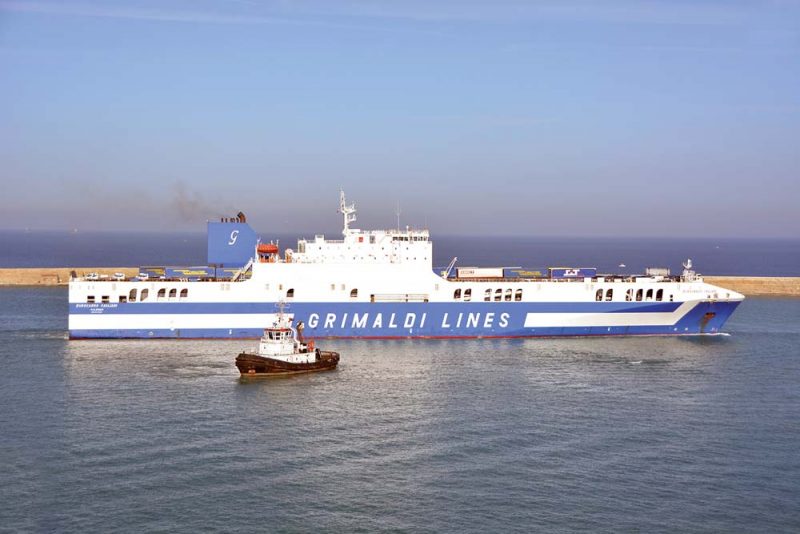
The Cantiere Navale Fratelli Orlando shipyard was established in 1866, and has two building berths of 142 metres and 128 metres in length with a maximum annual output of 6,000 tonnes of steel. There are two dry docks, one of length 139 metres and a width of 18 metres, and a larger dry dock opened in 1974 of length 350 metres and width 54 metres. There are two outfitting piers of 200 and 185 metres in length, and the yard offers all types of ship repair. The Orlando shipyard became part of the Fincantieri Group in 2003, building sections of ships for erection at other yards in the group.
The Head Office of the Livorno Port Authority is in an ochre coloured three storey building that was the home of Guiseppe di Pietro Rossano, an important trader born in Alassio in 1621. The ground floor warehouse was for the storage of goods unloaded from barges which then made their way along the canals of Livorno. The Pietro Rossano family resided on the first floor, which now occupies the President and General Secretary offices and secretariat, the Board Room, and the Marketing, Research, Analysis and External Relations offices. The President of the Northern Tyrrhenian Sea Port Authority is Senor Stefano Corsini, born in 1958 and a graduate in hydraulic engineering of the University of Rome. The top floor of the Head Office is a loft with large windows with a wonderful view of the busy port of Livorno, which was used in the past to log the arrival and departure of ships. The Italian Government on 15th September 2016 reduced the number of regional port authorities from 24 to 15, of which the North Tyrrhenian Sea Port Authority is one such port authority. The Italian black and white hulled three masted sail training ship Amerigo Vespucci 3,410/31 is a frequent graceful visitor of Livorno harbour from its home base of La Spezia naval dockyard.
The Port Of Piombino
Piombino lies around forty miles to the south of Livorno at the north west corner of the Gulf of Follonica, about ten miles north east of the island of Elba. Latitude is 42º 56′ north, longitude 10º 33′ east. Ore carriers of around 50,000 dwt can berth at the iron ore quay with a length of 260 metres and a maximum draft of 11.9 metres. The port is accessed from the sea in a channel between the Acciaierie Pier to the north and the Molo Foraneo to the south and is dredged to 12.7 metres of water. Strong winds and considerable swells are common off the port, and vessels are advised to seek shelter by anchoring in Portoferraio Road to the north of Elba island. The passenger and mail ferries that operate off the coast of Tuscany have priority in VHF radio communications regarding navigation and manoeuvring off the coast. In calm conditions, vessels can anchor off Piombino but seaweed in large quantities can reduce the holding power of the anchors.
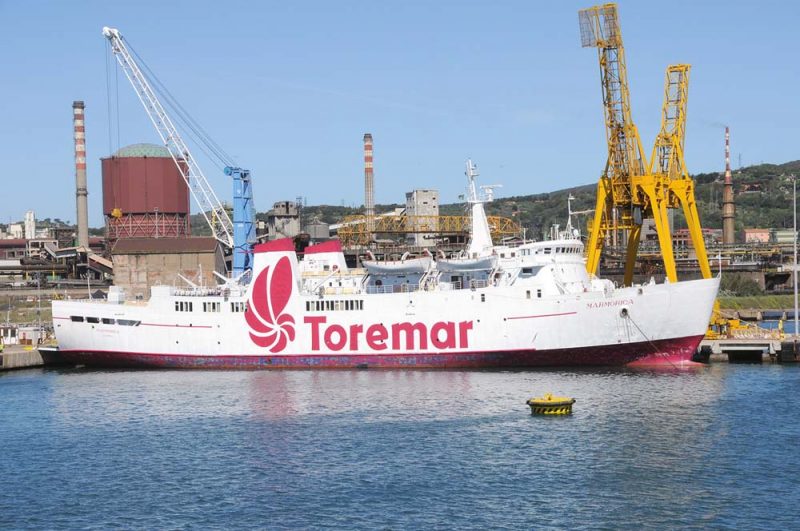
The first written reference is to the port of Phalesia in 417 AD with the arrival there of Rutilius Namatianus from Rome. In the Middle Ages, it was an important port for Florence and the Republic of Pisa, particularly for the iron ore and wine trades from Elba. Mail services for the several islands of the Tuscan archipelago began in 1847, and iron ore shipments saw port traffic increase to 323,000 tonnes in 1908. This increased to 700,000 tonnes by the 1930s, but the port was completely destroyed during World War II, especially in the Battle of Piombino on 10th September 1943.
After the Italian surrender to the Allies, a German naval coastal flotilla tried to enter the harbour, but they were denied entry by the port authority. However, they were later allowed to enter, but once inside began hostile behaviour to the local population and the Italian Army commanders, and a battle broke out at 2115 hours. A considerable fire fight between Italian and German forces saw German MTB and Luftwaffe service boats sunk and the German attack repelled with the loss of 120 German troops dead and two to three hundred wounded and captured. The Italians lost four submarine chasers sunk, four troops killed and a dozen wounded, however German troops retook the port two days later until ousted by the advancing Allies from the south.
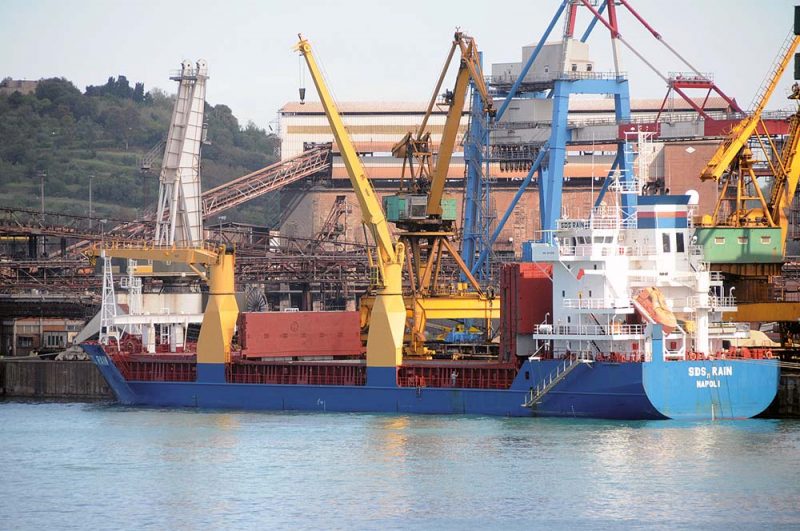
The principal wharves in the port were rebuilt in post-war years and the iron ore trade reached an annual figure of four million tonnes by the late 1970s. The development of tourism from the 1970s onward was rapid, and took place on the Elba Lines ferry berths. The principal wharves in the late 1970s were:-
Molo Foraneo of length 108 metres and alongside depth of 7.6 metres.
Centro Molo Foraneo of length 300 metres and alongside depth of 6.0 metres, with the inside berth reserved for the ferry to and from Sardinia making three return trips per week.
Banchina Trieste of length 143 metres and alongside depth of 5.2 metres.

Banchina Premuda of length 95 metres and alongside depth of 4.0 metres.
Elba Lines ferry berth to Portoferraio and Olbia on Sardinia of length 85 metres on the south side, 82 metres on the north side with alongside depth of 6.0 metres.
Darsena G. Lanini and Darsena Magona were used for yachts and small craft.
Molo Magona d’Italia with a thirty tonne capacity crane, and quay of length 140 metres and alongside depth of 8.5 metres.
Darsena Acciaierie di Piombino had two berths of 180 metres in length and alongside depth of 6.0 metres.
Acciaierie Pier had six berths for iron ore or coal discharge with lengths up to 470 metres south side, 270 metres north side, and alongside depths of 12.7 metres, by two modern large transporter cranes and also mobile cranes of thirty tonnes capacity.
The last iron ore mine on Elba, the Ginevro mine, closed down in 1981, and thus the source of vast deposits of pyrites, magnetite, hematite, limonite and siderite had run out. The concession had belonged to Societa Nuovo Italsider, later ILVA, and the extraction of some ores and magnesium silicates continued for another year or more. However, Piombino is still the seventh biggest dry bulk port in the whole of Italy as other international companies have moved very close to the port for iron and steel production. These international companies are:-
Lucchini spA, the second largest steel plant in Italy, belonging to Severstal (Russia), which produces a wide range of specialised, high quality, long products e.g. bars, rods, billets, rail track as well as directly pressed castings and pieces, forged parts and laminated flat parts.
Magona d’Italia spA of the Arcelor/Mittal group of France and India, which is a product leader in the galvanised thin steel laminates sector.
Tenaris Delmine, of the Techint Group, a specialist in the production of welded pipes for water and gas conduits.
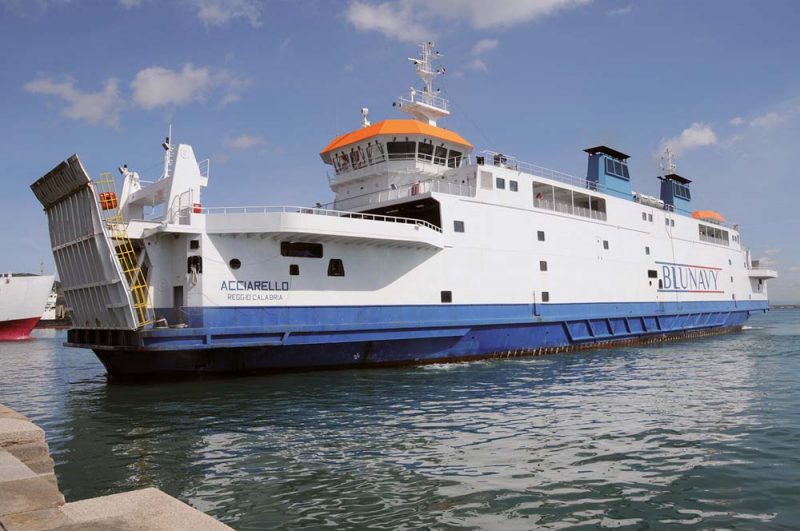
The Acciaierie Pier is still in use today in the northern area of the port for operations with the above steelworking companies, which are carried out on this former ILVA jetty, south side 470 metres, north side 270 metres. The port operations relating to other dry bulk cargoes are now carried out on Giuseppe Pecoraro Wharf of 275 metres in length, and the Magona jetty of two berths of 155 and 105 metres in length, and the Marinai d’Italia quay of 125 metres in length. The passenger ferry and ro-ro traffic to Elba and Sardinia uses the Dente Nord Capitaneria quay of 85 metres in length and the Elba Lines jetty of 85 metres in length, the Banchina Premuda quay of length 95 metres, and the Trieste quay of length 135 metres, and the Batteria quay of length 285 metres. The Batteria area on the south side of Piombino harbour is the traditional area adjacent to the Molo Foraneo breakwater.
Portoferraio and Rio Marina Ports on Elba
The island of Elba is the last remaining tract of land that once connected the Italian peninsula to Corsica. It is eighteen miles in length with a maximum width of 11.2 miles and is the third largest island in Italy, after Sicily and Sardinia. The population swells in summer to triple the 30,000 permanent residents, with tourists arriving on ferries owned by Moby Lines, Toremar, Blue Navy Lines, and Corsica-Sardinia Ferries. The highest point on the island is Monte Capanne at an elevation of 3,340 feet. A high tower, Torre della Marina, is set above the harbour at Marina di Campo on the island.
There are two ports, Portoferraio on the north coast for tourist ferries, and Rio Marina on the east coast, the latter is now only a yacht marina but until 1981/82 it was a major shipment port of iron ore for the ILVA smelter at Piombino. A series of long conveyor belts led down the steep mountainside to a loading staith near Rio Marina. This hilly area to the east of the island is dominated by Monte Calamita, where the rich seams and deposits of iron ore were mined that made Elba famous since Ancient Greek times. The Greeks called the island Aethalia meaning ‘fumes’ after the fumes of the furnaces they used to smelt iron for swords and weapons.
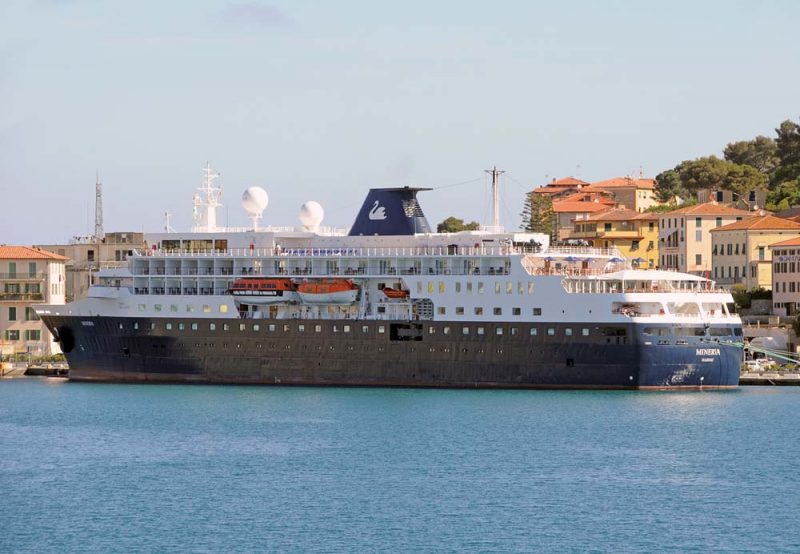
The island was then invaded by the Etruscans, and later by the Romans in 480 BC, followed by waves of Visigoths, Ostrogoths and Lombards. The island was acquired by the Lords of Piombino in 1398, but in 1544 the island was devastated by Barbary pirates from North Africa, who also sacked the coast of Tuscany. Two years later, the Medici dynasty became the rulers of the island and they fortified the port of Portoferraio. In 1596, Philip II of Spain captured the smaller Porto Azzurro and had two fortresses built there.
Elba became a French possession in 1802, and became famous during 1814/15 for the stay in exile of Emperor Napoleon Bonaparte, having proclaimed himself ‘Emperor’ in 1804. His downfall occurred after he had been forced to abdicate by the victorious European armies in 1814 and he arrived in exile at Portoferraio on 30th May 1814. He stayed at a large villa but was allowed to keep his personal bodyguard of six hundred men, as it was not thought possible that he could escape as the seas around the island were patrolled by the Royal Navy. However, the fallacy of choosing this exile island close to the Italian coastline and Corsica was shown when his close friends managed to smuggle him onboard a sailing ship flying British colours on 26th February 1815. The ‘exile’ had lasted only three hundred days, and he then marched from Southern France northwards while recruiting a new vast French Army that was only just defeated by combined British and Prussian troops at the Battle of Waterloo on Sunday 18th June 1815 some 9.3 miles south of Brussels with the colossal loss of over 41,000 troops killed from both sides.
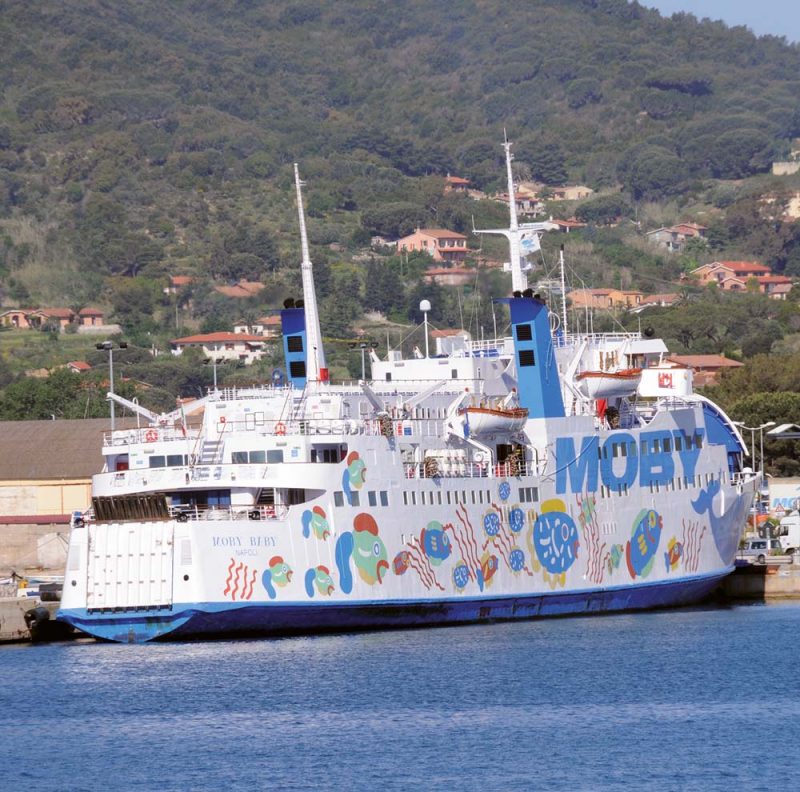
At the subsequent Congress of Vienna peace treaty, the island was restored to the Grand Duchy of Tuscany, and the ‘Emperor’ Napoleon Bonaparte was exiled to one of the most remote places in the world, the South Atlantic island of St. Helena, where he died seven years later at the ‘Longwood’ residence, which to this day is maintained as a French property on a British sovereign island. Bonaparte had escaped from Elba from the harbour at Portoferraio, which lies on the west side of a one mile wide bay and has easy access and is free of maritime dangers. There is a good anchorage here for vessels drawing up to fifteen metres. There are seven quays in Portoferraio as follows:-
Darsena Portoferraio is a rectangular basin of dimensions 245 metres by 180 metres with a maximum depth of 11.0 metres although alongside depths can be as low as 2.7 metres.
Molo del Gallo can accommodate vessels up to 150 metres in length with alongside depth of 10.0 metres.
Nuovo Darsena with three piers for ferries from Piombino, with the Pontile G. Massimo of length 75 metres and alongside depth of 6.0 metres, and two other piers of length 90 metres and 75 metres.
Cement Darsena with a cement factory and canal basin in the west part of the harbour, with quay length of 110 metres and alongside depth of between 3.7 and 4.3 metres.
Moby Lines
Moby Lines was established in 1959 as Navigazione Arcipelago Maddelenino as a ferry operation by Achille Onorato from Palau in Sardinia to Isola Maddalena off the north east coast of Sardinia, and then to the Tuscan island archipelago from Piombino to Elba. Small ferries included the twin funnelled Maria Maddalena 298/55 and Elba Prima 1,082/62. A large blue whale began to appear on both sides of the white hulls of Moby Line ferries in 1981, with the fleet also then serving various routes to Corsica and Sardinia from Livorno, and comprising four ferries in Elba Prima 1,082/62, Bastia 1,936/74, Citta de Piombino 496/64, and Giraglia 2,041/81, a near sister of Bastia.
The well known Thoresen ferry Free Enterprise II 5,965/65 was purchased in 1982 and operated as Moby Blu from Piombino to Bastia on Corsica, and later from Piombino to Portoferraio on Elba. This ship introduced the ‘Moby’ prefix to the fleet which has continued ever since.
The Moby Lines fleet in 1992 comprised six ferries, which increased during the 1990s to reach a size of eleven ferries at the beginning of 2001. Moby Wonder and Moby Freedom of 36,100 grt arrived from the South Korean yard of Daewoo Shipbuilding and Engineering Company at Okpo later in 2001 for a new service from Genoa to Olbia on Sardinia. They had accommodation for 1,880 passengers and 700 cars as well as 130 trucks. The fleet in 2003 comprised sixteen ferries. These ferries were operated by Moby Lines, Elba Lines or Sardegna Lines, and were registered under a variety of company names of the Onorato Group ferry, tug, offshore, shipbuilding and repair, and industrial companies.
The very well known DFDS sister North Sea ferries built in 1975/76 as Prince of Scandinavia (later Tor Britannia) and Princess of Scandinavia (later Tor Scandinavia) were purchased in 2006 and renamed Moby Drea and Moby Otta respectively. The current Moby Lines ferry fleet is one of sixteen vessels, most of which are very big ferries with accommodation for up to 2,200 passengers and 750 cars and trucks, with all having gaily painted hulls, including a large blue whale, and various coloured funnels.
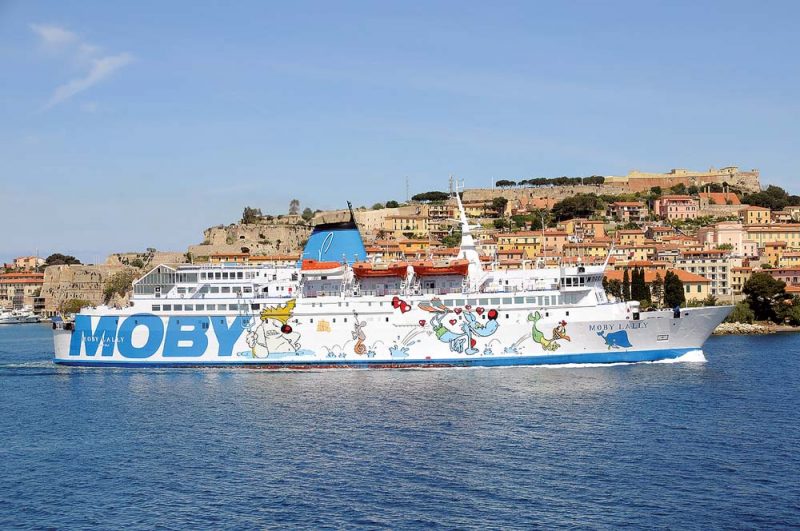
The current CEO of Moby Lines is Vincenzo Onorato, who lives in Portoferraio on Elba, and is an ambitious and passionate yacht racing sailor, who is actively preparing an Italian challenge to the America’s Cup. His family originated from the island of Ponza to the north west of Naples.
Postscript
The island of Capraia to the north of Elba is only five miles long with a maximum of two miles wide with a tiny population of four hundred souls. Porto di Capraia is connected to the island village by the only asphalted road on the island, which is dominated by the huge Fortress of St. George. The island was a penal colony from 1873 to 1986, and closed to the outside world, and occupied two-thirds of the island until closed down by the Italian Government, with the island then opened for tourism. Porto di Capraia is the fifth of the five ports operated by the North Tyrrhenian Sea Port Authority.
The Ports of Livorno and Piombino are very busy and constantly in use today, but owe their origins to the strong rule of the Medici dynasty from 1421 to 1737 and their use of these two ports to build up the treasure house of the city of Florence. The commercial activities of Florence encompassed basically the import of iron ore and wine from Elba, and the export of various finished goods e.g. leather ware to the south of Italy and the Levant.
The Moby Prince Disaster
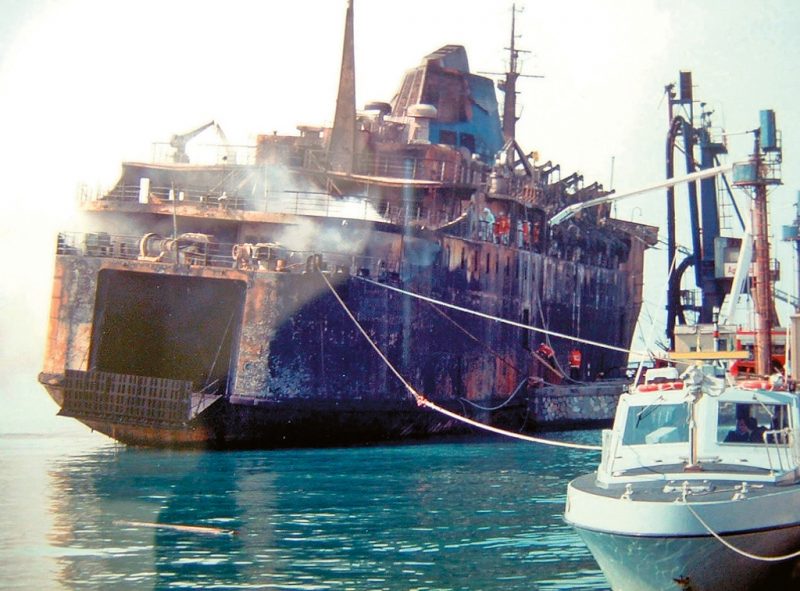 The Harwich to Hook of Holland ferry Koningin Juliana of 6,682 grt was completed by Cammell, Laird in 1968 for the Zeeland Steamship Company (SMZ), and was purchased in 1986 and renamed Moby Prince. She had accommodation for 562 berthed passengers and 638 deck passengers as well as two hundred cars on her car deck, and was powered by four M.A.N. diesels with a maximum speed of 21 knots. Unfortunately, she was the subject of a major maritime disaster at Livorno in 1991.
The Harwich to Hook of Holland ferry Koningin Juliana of 6,682 grt was completed by Cammell, Laird in 1968 for the Zeeland Steamship Company (SMZ), and was purchased in 1986 and renamed Moby Prince. She had accommodation for 562 berthed passengers and 638 deck passengers as well as two hundred cars on her car deck, and was powered by four M.A.N. diesels with a maximum speed of 21 knots. Unfortunately, she was the subject of a major maritime disaster at Livorno in 1991.
The Moby Prince sailed from Livorno at 2203 hours on 10th April 1991 for Olbia on Sardinia on her regular service with 75 passengers and 65 crew, under the command of Capt. Ugo Chessa. Unfortunately the VLCC tanker Agip Abruzzo was anchored just outside the port, and was a long dark shape immediately in the path of the fast moving Moby Prince. The impact was more or less at right angles to the tanker, with the ferry slicing through her number seven tank filled with 2,700 tonnes of light Iranian crude oil. An enormous fire broke out with burning oil sprayed onto the deck of Moby Prince and also spreading around the surface of the sea. The bow of the ferry was enmeshed inside the tanker until the VLCC captain ordered full power to the engines to separate them, but only worsened the oil spill.

The crew of now freed Moby Prince were not able to stop her engines, and the ship went out of control and began circling away from the location of the collision, heavily engulfed in flames. The Mayday from the tanker was quickly responded to by rescuers from Livorno, who arrived one hour after the ferry had left the quay, but did not hear the Mayday from the ferry some distance away. Rescue operations were centred around the tanker, with all of her crew rescued, but serious mistakes were made concerning the rescue of the passengers and crew of Moby Prince. The collision was not attributed to a massive impact between ferry and tanker, and only two tugboats reached Moby Prince at 2235 hours, and other rescuers arrived hours later. However, by that time, thick acrid fumes had rendered all of her passengers and crew unconscious, and they all died from suffocation apart from one young crew member found alive and hanging from the stern railing. A memorial to the dead of Moby Prince was later erected in Livorno harbour.
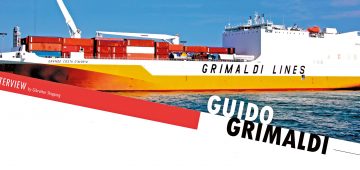



Comments
Sorry, comments are closed for this item